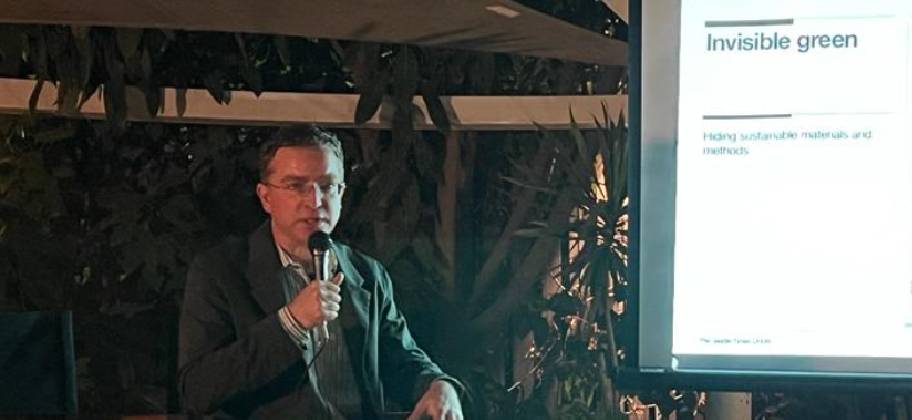Throughout our time at Esorus, we had the honor of engaging in a conversation with Blaine Brownell, an extraordinary individual whose narrative is truly exceptional. Right from the start, it became clear that this interview was far from typical.
Who is Blaine Brownell?
Blaine Brownell holds the position of Professor and Director at the David R. Ravin School of Architecture at the University of North Carolina at Charlotte. As an architect and researcher specializing in emerging materials and their applications, he was previously a Fulbright scholar in Japan. Brownell has authored nine books focusing on advanced and sustainable materials in architecture and design, such as “Matter in the Floating World,” “Material Strategies,” “The Pandemic Effect,” and the four-volume Transmaterial series. He has contributed the Mind & Matter column to Architect magazine and has been featured in over 70 journals covering architecture, design, science, and news, including Nature. In recognition of his contributions, Brownell was honored with elevation to the American Institute of Architects’ College of Fellows in 2020.
Blaine Brownell had an amazing talk under the title “Visible Green: New Material Opportunities in Sustainable Design,” which was initiated by Helwan University and hosted at the Design Haus.
His words were very insightful and inspirational. Then, we had the privilege to ask him a few questions.
What do you do to achieve sustainable architecture? And what are the challenges that you face?
In the United States, we have similar challenges that you have in this part of the world, but also different challenges. I think in the United States, there is so much regulation that is structured around non-sustainable practices and certain building materials that are required. For example, there is a fear of earth-based architecture like rammed earth, which is very strange because most of the housing in the world is made of earth or earthen materials, but our regulatory system is based on very particular materials of building trades, many of which are not sustainable. So, that is one of our big challenges in the United States, but I think there are some ways that, in terms of new technologies and also rediscovering traditional practices, we can become more sustainable.
Do you provide young architects with tips, information, and training about sustainability?
Yes, I hope to, so I teach architecture and love working with students and young professionals. I also teach classes on sustainable materials, and I also enjoy opportunities like this one tonight. Which is giving a talk under the title “Visible Green” to the Design Haus audience here, I have written a few books that I hope can help with information and inspiration about sustainable materials. I wrote a series of books called Trans Material, which stands for Transformational Materials, and I’m working on some more books about sustainability. So, I hope to help. It’s a changing field, and we’re learning new things all the time, so we can inform each other about the world of sustainability.
What are the challenges that you have noticed in Egypt?
I find Egypt fascinating. So, I’ve had the good fortune of traveling to some places in the world, such as Tokyo. I lived there for a year, and I’ve traveled through different parts of India. So, I’ve seen different parts of the world exposed to different things. I say that because Egypt is unique, my experience here is not really like any other place I’ve been, and I’m just so fascinated with so many things. But one thing is the pattern and structure of the settlements here, what we might call informal settlements in some places, but what does that mean? It’s not slumped; it’s building patterns that arise out of more emergent kinds of processes that are fantastic and are in various stages of completion, incompletion, and change, but I think this is more a representation of how the world works.
I think that some of the formality that we think about in places like the United States is kind of a myth that buildings never really stay fixed. There’s a kind of conception of completeness of architecture like you’re done; you’ve thought of the building holistically and designed it, and then you complete it and it’s perfect and it’s done, but that is kind of a myth, and I think the way that the physical environment is structured here and it’s a constant change, to me, is fascinating and speaks more to sustainable opportunities because of material flow. You know understandings of how materials are used and reused, constructed, and deconstructed as a cycle.




